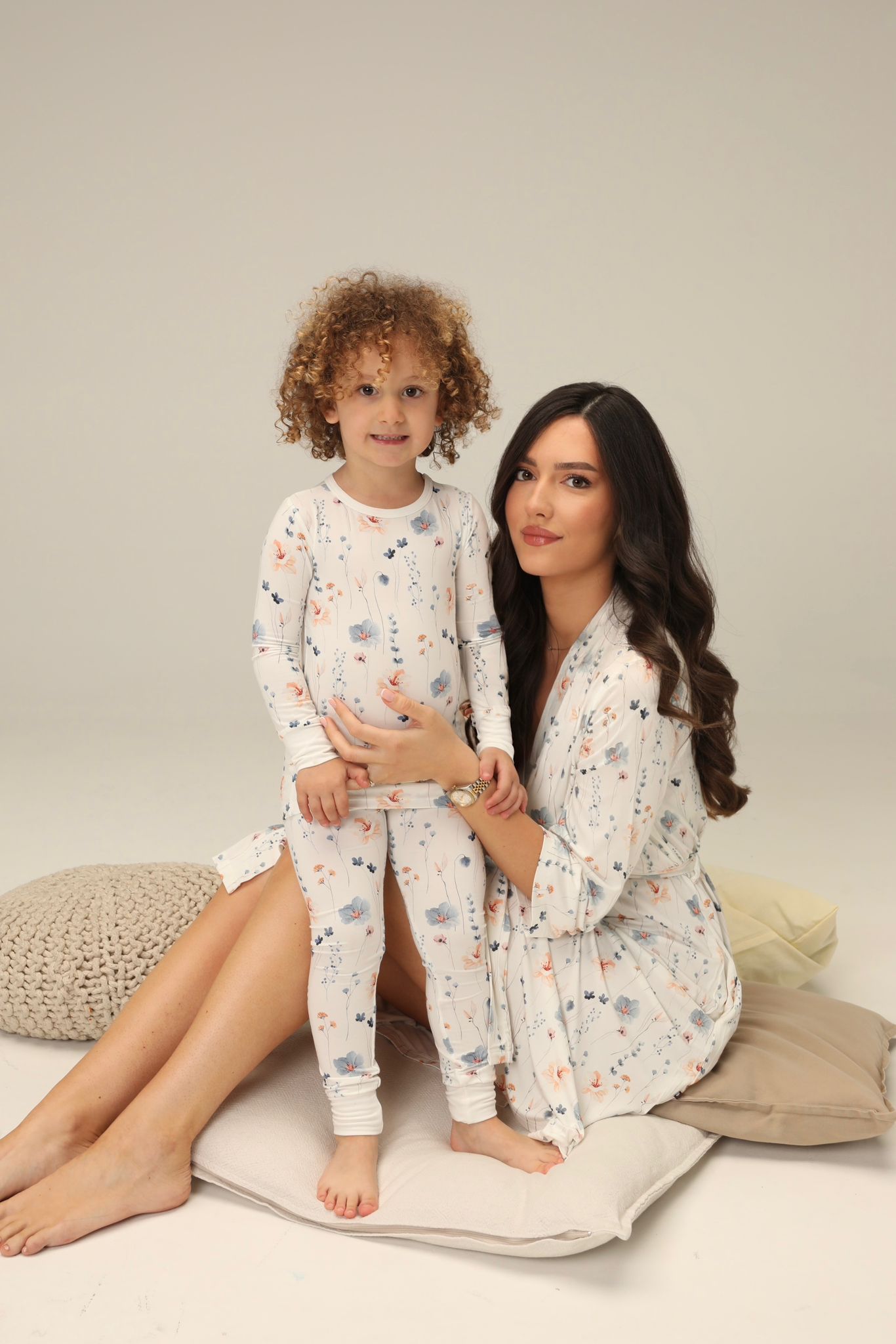Cold weather brings a natural urge to bundle up but when dressing your baby for winter, warmth has to be balanced with breathability and safe layering. Babies don’t need as many layers as adults, and overheating can be just as risky as being too cold.
Start with a long-sleeve bodysuit or onesie as a base layer, followed by a soft footie or sleeper. In cooler homes, or during outdoor transitions, add a swaddle, wearable blanket, or a bunting suit for added insulation. Look for footies that have built-in foot covers and fold-over mittens to keep extremities warm without needing socks or gloves that fall off.
MA-MA NYC footies are made for this kind of layering. The breathable bamboo fabric holds warmth without trapping sweat, and the hand covers extend up to 24 months, which gives you mitten-like protection built right in. Our flip-open foot feature lets you uncover baby’s feet when indoors or tuck them in for warmth outside.
For walks or errands, a hat is essential. Choose one made of bamboo or soft organic cotton that won’t irritate your baby’s skin. Keep outer layers light and breathable, especially when moving between indoor and outdoor spaces. Avoid bulky jackets inside car seats, as they interfere with harness safety.
Tip: Use your baby’s chest or neck, not hands or feet, to check if they’re too warm. If damp or sweaty, remove a layer.


